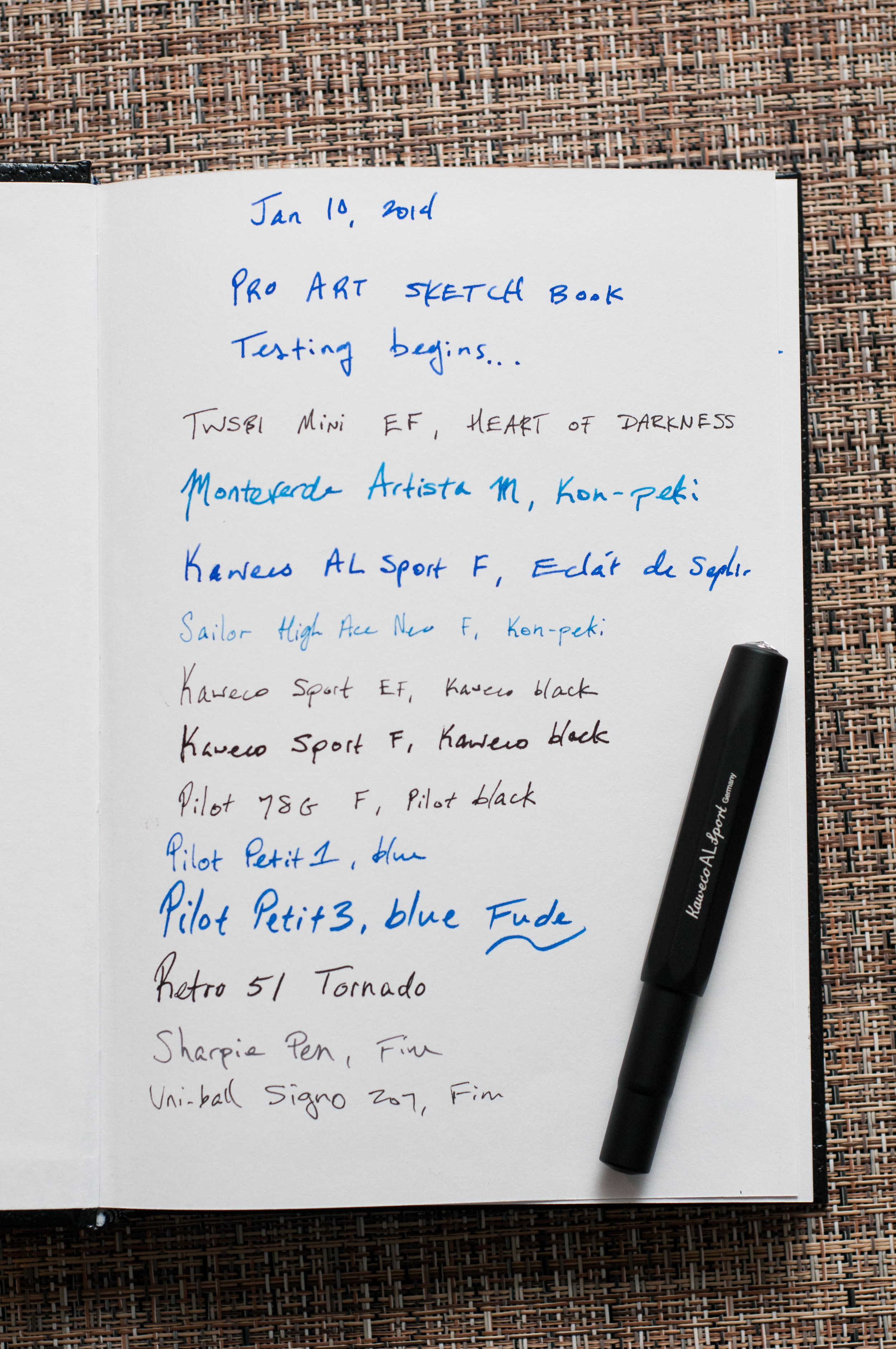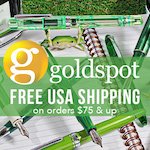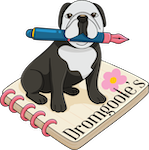There was a brief period where I was trying to find a cheap notebook that would perform admirably with all kinds of fountain pens. I've since given up on this endeavor. I'm convinced that buying notebooks that use high-quality paper is much more beneficial than buying notebooks that I hope will perform. The Pro Art sketchbook is one of the many notebooks I bought on this ill-fated journey.
For around $7, the Pro Art sketchbook is a pretty solid little notebook. It's 8"x5.5" inches in size, has 110 pages (220 sheets) of 65# white, acid-free paper, and a hard cover. Sounds like a great contender on paper, and I firmly believe that this is a solid notebook. There are just a couple of downsides to this notebook that keep me from carrying it with me and using it daily.
The first, and most crucial, downside is the paper feel. This paper has a tooth on it that's noticeable with every pen I've tried on it. For me, this makes it difficult for long writing sessions or quick bursts. There's too much friction between the nibs and the paper. The finer the nib, the more accentuated the feeling. I'm sad to say it, but this isn't the perfect paper for fountain or gel pens.
Another downside is the cover. I don't expect much from a notebook that costs this little, but the sharp corners are a point of concern for me. They tend to get hung in different parts of my bag when trying to tuck it away or pull it out. Not a big deal really, but I thought I'd mention it. It's one of the small quibbles that adds up in the grand scheme.
It's also a bit thick for just 110 pages. That's due to the thick paper, so I won't complain about that. It's about half an inch thicker than other similar notebooks.
Top to Bottom: Clairefontaine 1951, Moleskine, Leuchtturm softcover, Ecosystem Journal, Pro Art sketchbook.
There are still plenty of positives for this paper. For one, it's thick. I've only noticed minimal show-through with even my wettest pens. Only a couple of my nib/ink combinations resulted in bleeding on the page. Not perfect, but much better than other notebooks in the same price range or even a Moleskine.
Overall, I think this notebook is meant for other dry art instruments, such as graphite and charcoal. At some point I'll give it a shot, but I've misplaced my art supplies from college somewhere in the attic.
It's hard to tell people this is a bad notebook when it costs so little. The paper is scratchy, the corners are sharp, and it's a bit thick. It's also a heavy paper that takes well to wet inks and wide nibs. Keep these things in mind and give it a try if it sounds like your sort of thing.
(You can find more from Jeff online at Draft Evolution, Twitter, and App.net.)













